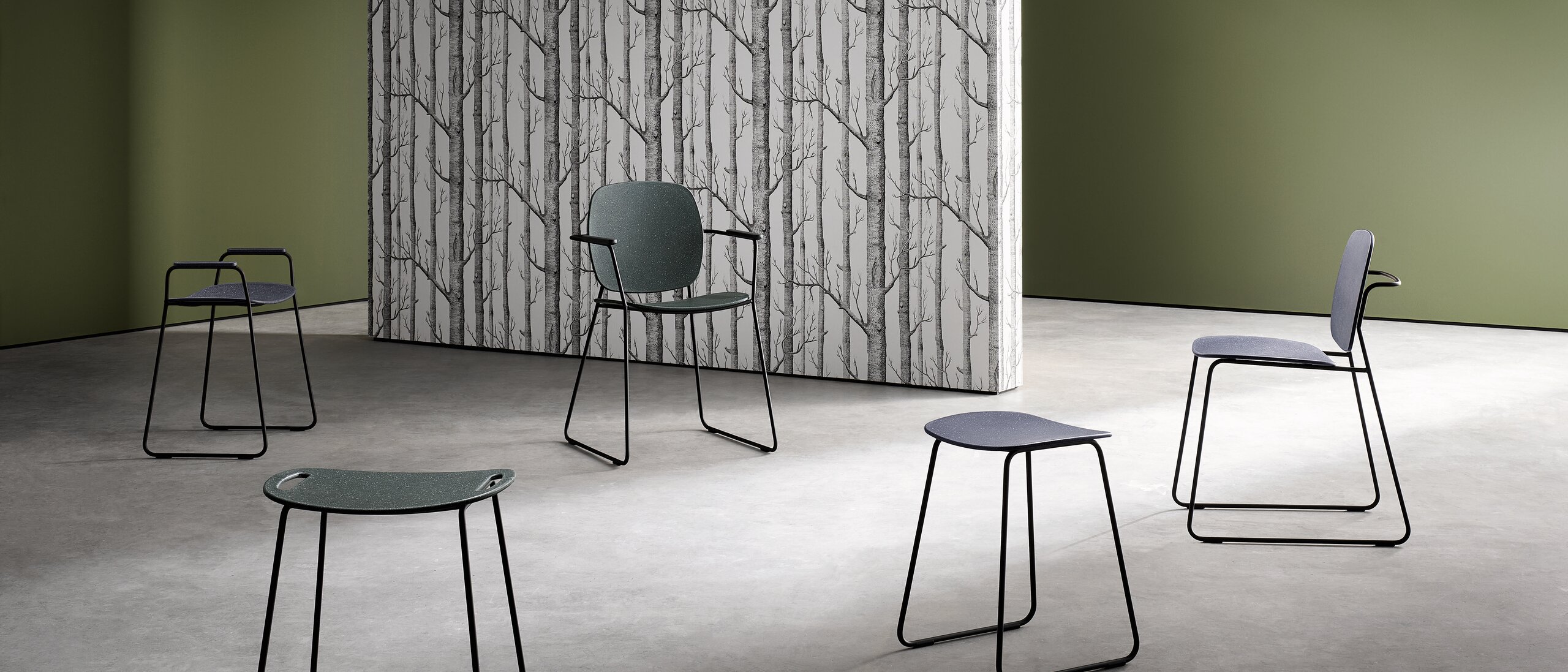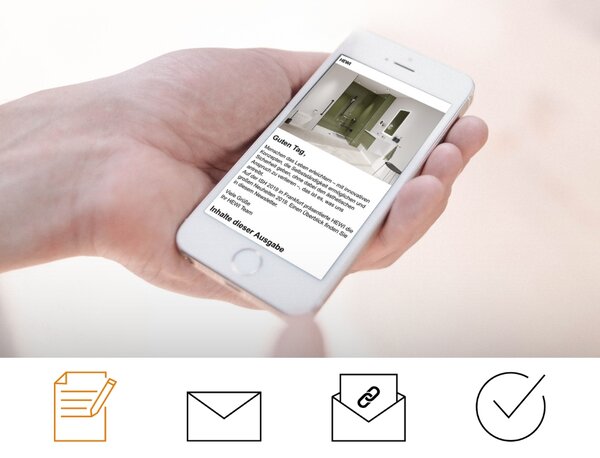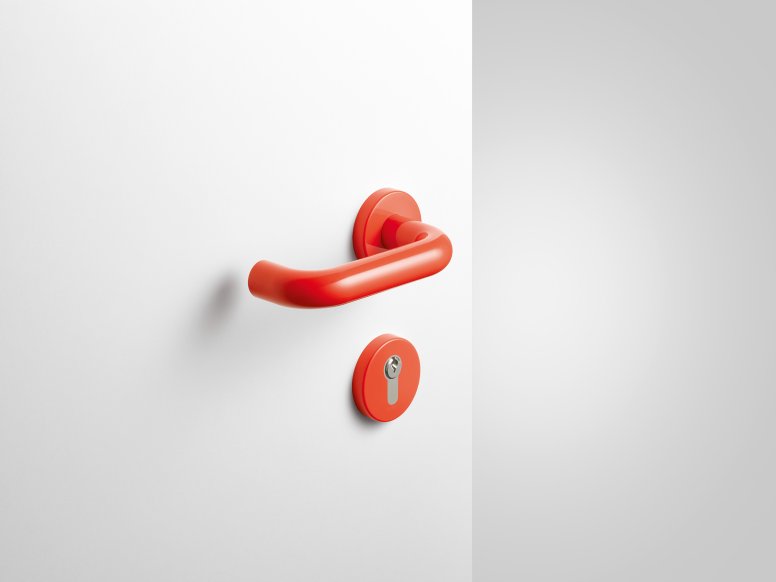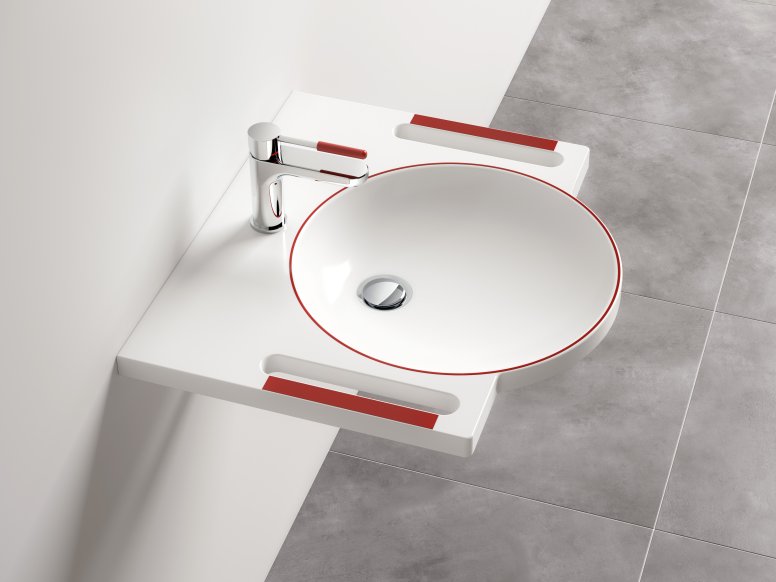HEWI MAG / Sanitary
Sustainability in the bathroom: How to design the bathrooms of your customers sustainably
Sustainability is on everyone’s lips. Whether in everyday life, in society, or in architecture: We encounter sustainable measures everywhere. We will use the Day of Bathing on September 16, 2023 as an opportunity to take a closer look at this topic. With the help of valuable tips in this article, we will show you how to bring both environmental and social sustainability into the bathroom of your customers.
The issue of sustainability concerns everyone. Climate change is now having a wide range of impacts on nature, society, and the economy. Glaciers are thawing, there are increasingly more hot days in summer, and the behavior of migratory birds is changing – spring is also starting much earlier than 40 years ago.1 In order to protect the climate and make society more inclusive, sustainable measures are mandatory – also when it comes to bathroom design. Topics such as making everyday life sustainable, planning new buildings and renovations with foresight, and using suitable materials in construction are crucial for counteracting climate change. The following tips will help you to implement sustainability in bathroom planning.
1. Use sustainable materials and environmentally conscious product manufacturing
When you design a bathroom sustainably, it is indispensable to consider the choice of materials. In the case of building materials, increasing attention is being paid to the environmental friendliness of the materials used – for the benefit of the climate. The building materials wood, straw, and hemp are considered to be particularly climate-friendly because they are renewable and have a positive eco-balance. In addition to the choice of materials, the manufacturing process is also quite important in terms of sustainability. Products that are CO2-neutral, regionally produced, and have a short supply chain are recommended here.
Further information on the Re seating family can be found in the interview with Senior Product Manager Susan Herrmann.
For example, the stools and chairs of the sustainable Re-seat family from HEWI are made of post-industrial recyclate and reflect the best eco-design. The natural colors forest green and dark granite gray, make the Re-seat family both haptically and visually appealing. The special thing about it: HEWI produces the Re-seat family from recycled polypropylene and polyamide. The polyamide comes from the company’s own production and the polypropylene is sourced from a regionally based supplier. This, in turn, benefits the supply chain. However, this sustainable approach does not mean that design is neglected. Quite the opposite: Each stool is unique because the materials used have a different melting point. This results in a mottled texture in the surface during the injection molding process.
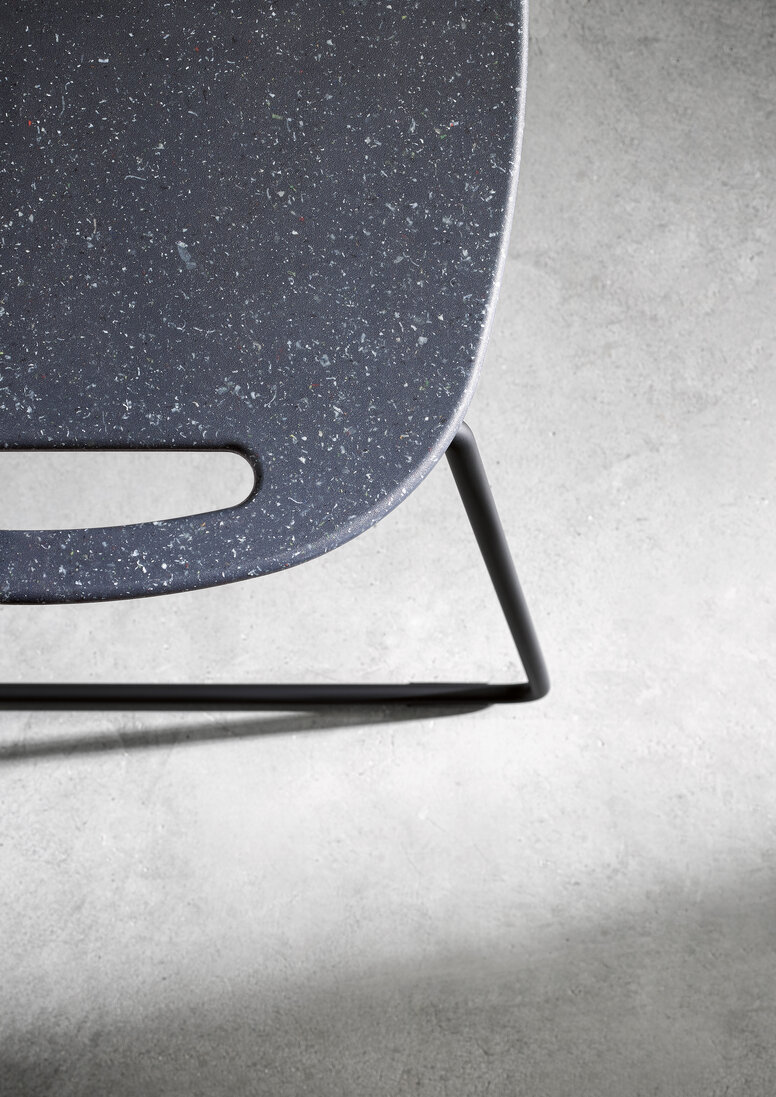

2. Plan ahead for the bathroom
Planning a bathroom with foresight and thoughtfulness influences its sustainability. Smaller bathrooms thus require fewer resources such as building materials, furniture, and energy. It is also important to pay attention to the product selection. In the sustainable bathroom, preference should be given to robust and durable products. High-quality processed materials are more durable and long-lasting – even with heavy use in everyday life. Replacing sanitary products is therefore usually not necessary until many years later. With durable solutions, you counteract the short-lived nature of products and save valuable resources.
You are also promoting social sustainability with a well-designed bathroom. This is how you integrate older or physically impaired people into everyday life when you plan and equip a bathroom for multiple generations. Especially in times of demographic change, this is particularly important for an inclusive society.
With the accessible sanitary range, HEWI offers you and your customers durable and robust products that focus on the needs of all and provide the best possible support for users in a self-determined everyday life.
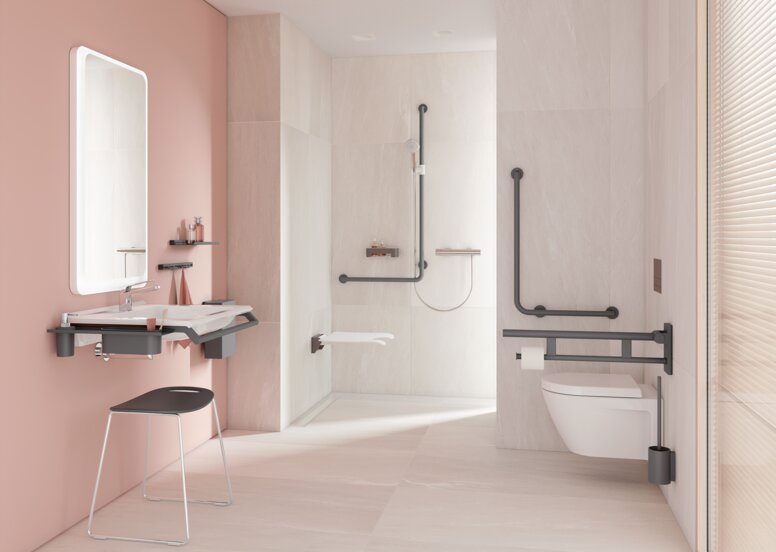
3. Choose easy-care products
You may be wondering about the climate and sustainability impacts of caring for a product. At first glance, care seems secondary. However, this aspect should not be underestimated. By making bathroom cleaning as uncomplicated as possible, cleaning agents, energy, and water can be actively saved. For example, rimless toilets or sinks without an overflow are easier and faster to clean. Joints in products can also be rather obstructive and make cleaning difficult.
HEWI sinks made of mineral casting have a high-gloss non-porous surface, which is particularly hygienic and easy to clean. Thanks to their functional design, they are highly versatile. The accessible sink models make everyday life easier for physically impaired people and promote their independence, thereby combining social and ecological sustainability in the bathroom.
4. Use resource-saving products
Saving resources is an important contribution to protecting the climate. Water is one of the most vital resources and must be handled with particular care. In order not to waste water in the bathroom and to counteract the non-stop flow of water, resource-saving products are the obvious choice.
Electronic faucets are particularly water-saving, easy to clean, and robust – and thus contribute to a sustainable bathroom on several levels. The intelligent sensor technology of the faucets noticeably reduces water consumption. The faucets trigger by a sensor and automatically stop the flow of water after a pre-set time interval. Thanks to their robust design, these faucets are particularly durable. They are often used in public areas – where saving water is particularly important.

5. Plan suitable windows in a sustainable bathroom
If you include windows in a sustainable bathroom, it offers several environmental benefits. For one thing, windows provide natural daylight. Your customers will thus use less electricity than in an indoor bathroom. Windows in a sustainable bathroom contribute to the generation of heat. This saves both heating costs and energy. Another advantage of windows in the bathroom is that your customers can easily ventilate their bathroom. Air exchange prevents the formation of mold in the more humid indoor climate and keeps the bathroom looking beautiful for a long time.
6. Use energy-saving light in a sustainable bathroom
Light plays an essential role in the bathroom. Especially in the dark winter months and at night, it shows your customers the way and enables the comfortable use of the sanitary equipment. Lamps have a relatively long service life. Therefore, when planning, you should focus on energy-saving variants. LED lamps noticeably reduce power consumption and thus contribute to environmental protection.
Glare-free LED mirrors ideally illuminate the face of your customers as well as certain areas of the sustainable bathroom. The high-quality LED mirror illuminates the mirror image evenly. The LEDs are located behind a satin mirror edge, which reproduces the original colors. The light of the mirror is warm white and creates a pleasant ambiance in the bathroom.
Sustainable bathroom design: It depends on a wide variety of aspects
Whether with resource-saving or low-maintenance products, windows, energy-saving lighting, sustainable materials, forward-looking planning, or environmentally conscious manufacturing – with a sustainably designed and well thought-out bathroom, you contribute to climate protection and promote the social integration of older or physically impaired people.

Stay up to date
In our newsletter, we inform you about interesting topics and innovations from the fields of building hardware and sanitary areas. Always stay up to date by subscribing to the HEWI newsletter.
